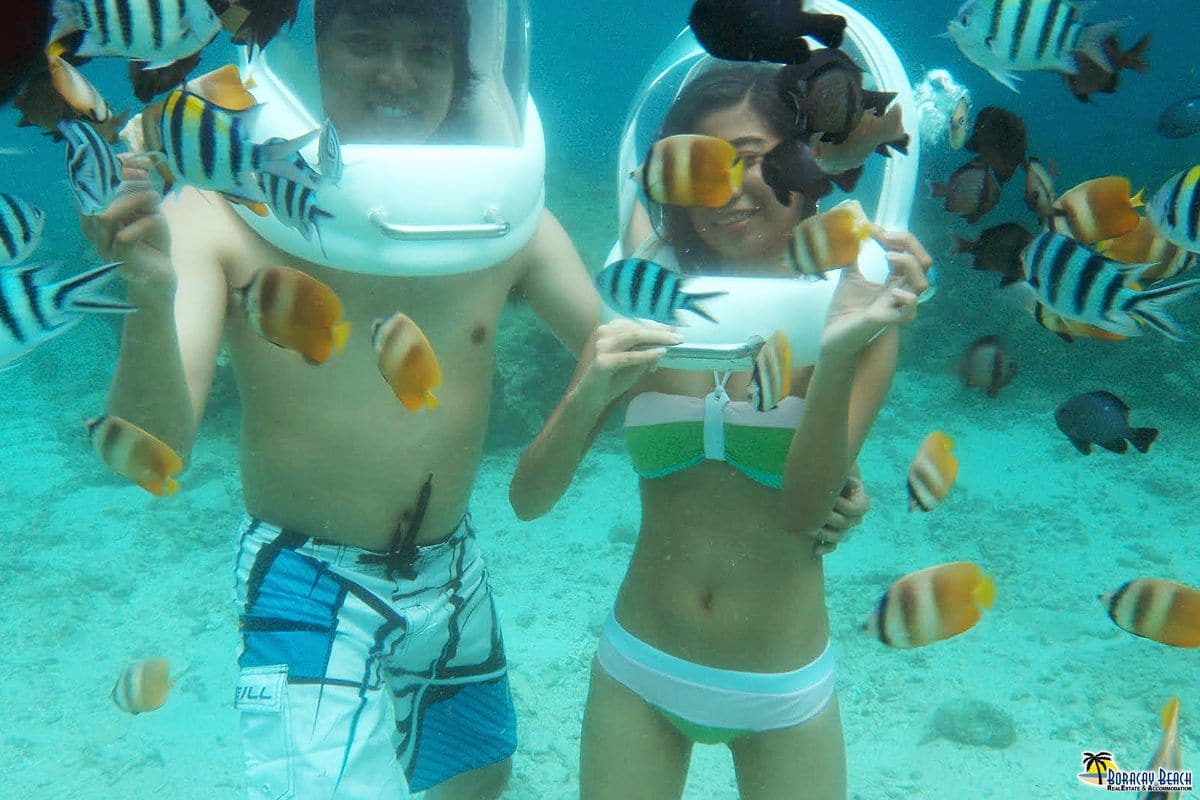Last Updated on: April 20, 2024
Enjoy the speed of the speedboat as it whisks you off to the diving platform. Once there you will adorn your diving helmet and descend to the depths of the ocean floor where you can watch the fishes swim by while exploring the coral reefs.
Full helmet diving tour details
- Stroll along the ocean floor and marvel at the colorful and exciting marine life on the ocean floor!
- Not a swimmer? No worries! Helmet diving does not require any swimming prowess or complicated gear
- Just walk normally as you do above water and enjoy an up-close look at the incredible marine life
- Feel safe in the hands of PADI qualified dive instructors
- Upgrade your Helmet Diving experience and bundle it up with our limited add on Parasailing activity!
Helmet diving tour package details:
Included:
- Local English-speaking PADI qualified dive instructors
- Boat ride
- Soft copy of pictures and video
- All necessary equipment
Not Included:
- Hotel pick up and drop off
- Insurance
Eligibility
- Participants must be aged 13+ to participate in this activity
- Seniors aged 60+ should present a medical certificate before participating
Additional Information
- Guests are required to sign a liability waiver form that informs them of the risks of the activity
- For health and safety reasons, you should not take a flight for at least 24 hours after you dive
- Do not participate in this activity if you’ve just consumed food or alcoholic beverages
- If the sea is too rough, the experience may be cancelled. If the winds are too strong, there will be a possibility that children will not be allowed to participate for safety reasons
- Participants aged 18+ must sign a waiver before participating. An adult should be present to sign the waiver for participants aged 13-17. Please download, read, and sign this waiver form before your arrival
Prohibitions & Limitations
- This activity is not recommended for anyone with certain medical conditions such as high blood pressure, epilepsy, etc.
Terms & Conditions
Confirmation
- Get instant confirmation. If you do not receive a booking confirmation, please notify us
Cancellation Policy
- Full refunds will be issued for cancellations made at least 48 hour(s) before the selected activity date
How To Use
Usage validity
- Use your voucher at the selected date and time
Opening Hours
- Monday-Sunday: 09:00-16:00
- Last admission: 15:00
Voucher Type
- Present your printed/mobile voucher
Meet Up Information
- Arrive at the meet-up location 15 minutes before the scheduled activity time
- Make sure to arrive on time
- Latecomers or no-shows can’t be refunded
- Look for the guide holding/wearing a Klook sign
- If you arrive past the waiting time and cannot be contacted, you will be considered a “no-show.” The representative will leave and no refund will be issued
Astoria Boracay beach front
- Address: Astoria Boracay, Boat Station 1 Boracay Island, Brgy. Balabag, Malay, 5608 Aklan
- Please refer to the map for assistance
How To Get There
- Take a local tricycle (PHP50) and proceed to Astoria Boracay, Station 1







